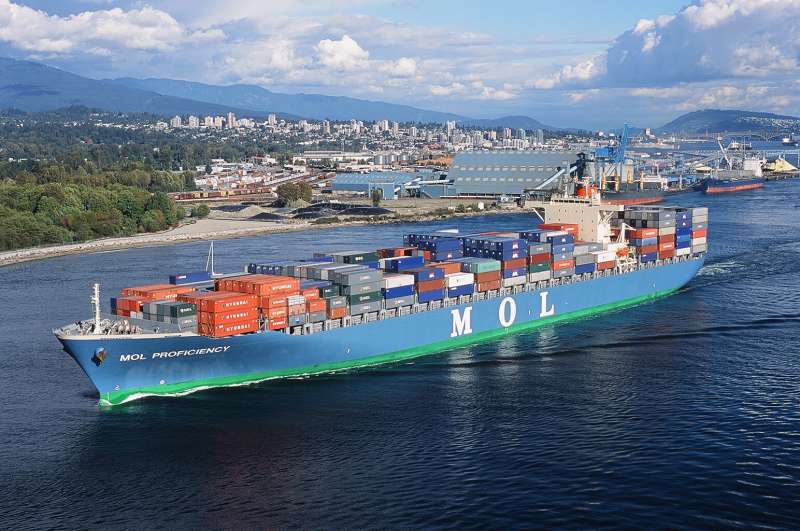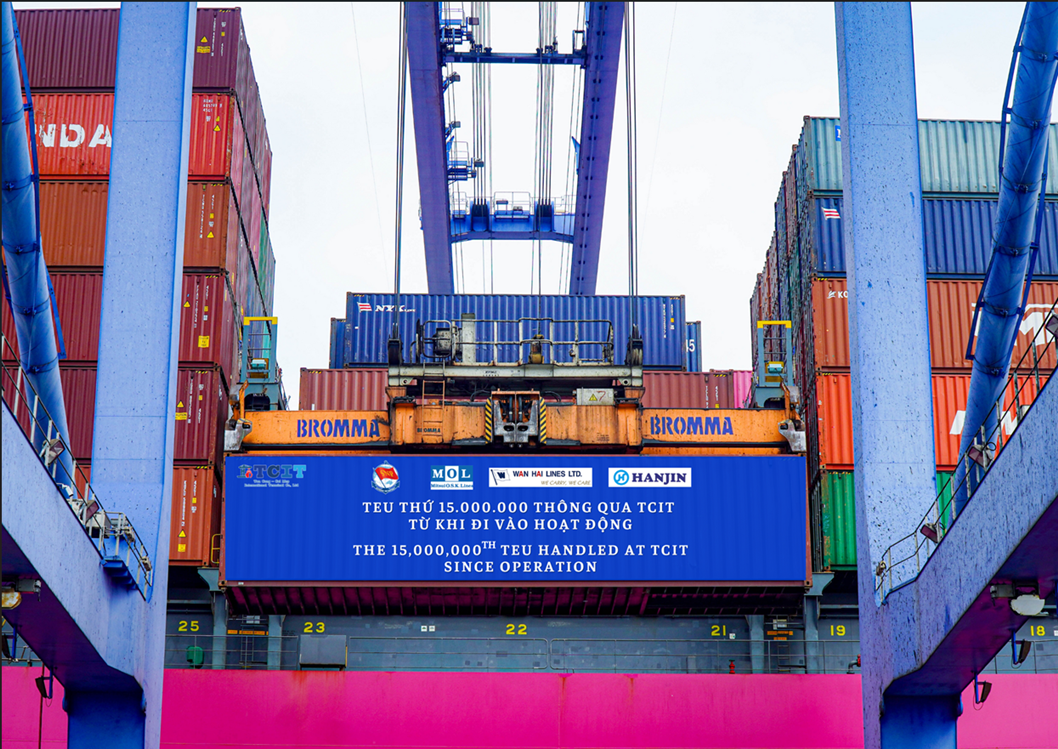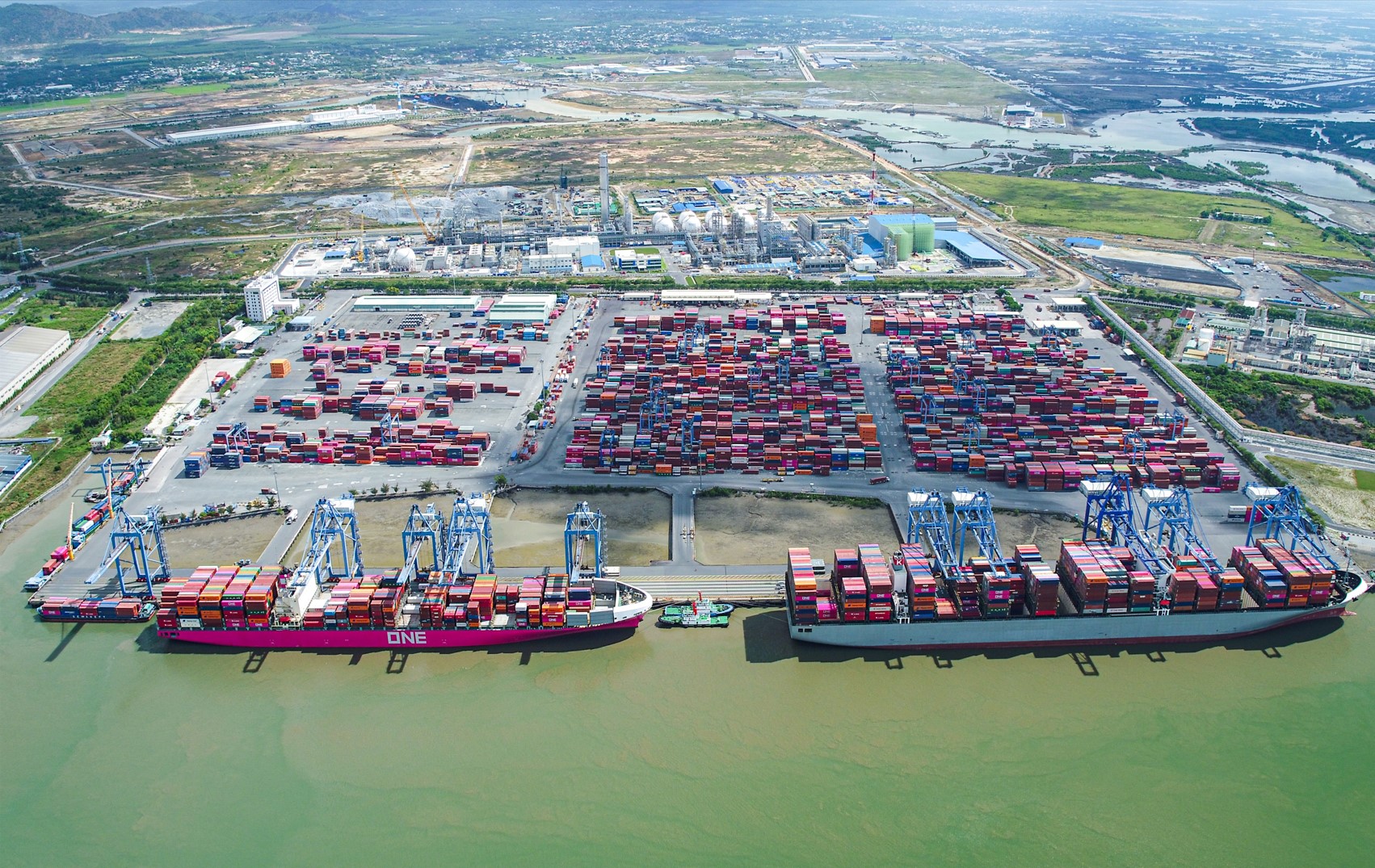
MOL’s Earnings Up in Q3 of FY2017
Japanese transportation giant Mitsui O.S.K. Lines (MOL) has reported JPY 29.2 billion (USD 258.6 million) worth of profit attributable to owners for the third quarter of the 2017 fiscal year, up from JPY 19.02 billion posted in the corresponding quarter a year earlier.
The company’s revenue stood at USD 10.9 billion, while its operating profit was USD 215 million in the quarter, recovering from an operating loss a year earlier.
For the nine-month period from April to December 2017, revenue was up 14.6 percent when compared to the same period from 2016 reaching JPY 1.23 trillion, while profit was 53.6 percent higher year-on-year, standing at JPY 29.2 billion.
For the full fiscal year ending March 31, MOL forecasts its profit to be USD 90 million and its revenues to reach USD 14.6 billion.
Looking ahead, the dry bulk shipping market is expected to proceed firmly again from the start of the year, supported by a robust supply and demand environment. With respect to
the VLCC market, a moderate recovery is anticipated during the period of winter demand that lasts until around the end of February, and then gradually soften again after that.
With regard to container shipping, MOL forecasts a jump in spot freight market when the market heats up for cargo volumes from Asia across all routes due to the rush in demand prior to the Chinese New Year holidays in mid-February. The slack seasons that ensues will push the rates a bit down, MOL added.
NYK Line’s Profit Rises in Third Quarter
Japan’s Nippon Yusen Kabushiki Kaisha (NYK Line) ended the first nine months of fiscal year 2017 with a net profit of JPY 16.8 billion, compared to a net loss of JPY 226.1 billion posted in the same period last year.
For the period from April 1, 2017 to December 31, 2017 consolidated revenues amounted to JPY 1.63 trillion, rising by 15.3 percent from JPY 1.41 trillion reported a year earlier. NYK Line posted an operating profit of JPY 24.8 billion for the nine months, compared with operating loss of JPY 15.5 billion.
Conditions in the maritime shipping market were positive overall during the nine-month period of the fiscal year ending March 31, 2018.
For the year ending March 31, 2018, NYK Line said that it expects its net profit to be at JPY 11 billion, while the revenues are forecast to rise by 12.9 percent to JPY 2.17 trillion.
The company also revised its dividend forecast for fiscal year 2017 after determining that the company has sufficient prospects for regaining profitability. Although the payment of a fiscal year-end dividend had not been decided thus far, the company now plans to pay a year-end dividend of JPY 20 per share.
COSCO Shipping Adds Its 2nd 20,000 TEU Boxship
China’s COSCO Shipping Lines has taken delivery of its second 20,000 TEU-class boxship, COSCO Shipping Taurus.
The delivery and naming ceremony for the ultra large container vessel (ULCV) was held in Shanghai on January 27, 2018.
Shanghai Waigaoqiao Shipbuilding (SWS) launched the Hong Kong-flagged ship on January 16.
COSCO Shipping Taurus, which features a length of 400 meters and a width of 58.6 meters, has a market value of USD 121.35 million, VesselsValue’s data shows.
Earlier this month, the company took delivery of COSCO Shipping Aries — described as China’s first 20,000 TEU containership — from Nantong COSCO KHI Ship Engineering (NACKS).
Apart from the two recently delivered ULCVs, COSCO Shipping Lines has nine 20,000 TEU vessels on order at SWS, NACKS and Dalian Shipbuilding Industry yards.
Hapag-Lloyd Recycles Seven More Boxships
German liner shipping company Hapag-Lloyd is sending seven older container ships to be recycled in Turkey and China.
The respective shipyards are especially equipped and certified to recycle ships in an environmentally friendly manner, according to the company. The vessels in question feature a capacity of 4,101 TEU each.
“The recycling of these ships is part of the restructuring of our fleet,” Anthony Firmin, Chief Operating Officer (COO) of Hapag-Lloyd, said.
“Since the merger with United Arab Shipping Company (UASC), we boast one of the youngest fleets in the industry on average,” Firmin added.
In September 2017, Hapag-Lloyd sent three older vessels from the former UASC fleet to be dismantled in an environmentally friendly manner.
The step means that Hapag-Lloyd is continuing to implement the internal Ship Recycling Policy it adopted in May 2014, whereby ships which are no longer needed must be recycled in a safe and environmentally friendly manner, the company added.
Hapag-Lloyd has a fleet of 215 container ships with a total transport capacity of 1.6 million TEU.
OOCL Christens Final 20,413 TEU Boxship
Hong Kong-based container shipping company Orient Overseas Container Line (OOCL) has christened OOCL Indonesia, a 21,413 TEU boxship newbuilding.
The christening ceremony was held at Samsung Heavy Industries (SHI) shipyard on Geoje island on January 17.
The ship, which has a length of 399.87 meters and a width of 58.8 meters, is the sixth and the last in a series of the company’s six 21,000+ TEU class ultra large container vessels (ULCVs).
OOCL Indonesia will begin its maiden voyage this month and join its five sister vessels on OOCL’s Asia-North Europe Loop 1 (LL1) trade lane. In a 77-day round trip, its port rotation is: Shanghai / Ningbo / Xiamen / Yantian / Singapore / via Suez Canal / Felixstowe / Rotterdam / Gdansk / Wilhelmshaven / Felixstowe / via Suez Canal / Singapore / Yantian / Shanghai.
On the occasion of the christening ceremony, Andy Tung, Chief Executive of OOCL, said: “The flexibility provided in our newbuilding program is one of the crucial elements to how we can better manage our fleet and operations in such a dynamic and challenging industry.”
Tung further said that the celebration also marked a “wonderful start” to the new year in 2018 as the industry is seeing a much healthier global economic environment not seen in many years since the 2009 financial crisis, and that various governments around the world are continuing to fuel the growth momentum with policy agendas to boost trade and economic cooperation.
Source: World Maritime News

.png)









